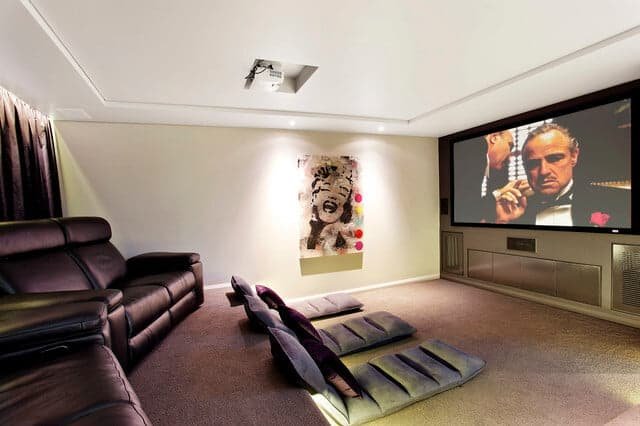How to setup a home theater?
Most home theater room design ideas either assume you’re working with a professional or avoid more accessible ideas and options for setting up a home theater. However, suppose you only consider upgrading and updating your home theater setup. In that case, you will be surprised that you can easily manage everything, even on a limited budget. It seems imminent that setting up a home theater would require a lot of new equipment—a premium projector, high-quality speakers, an AV receiver, and the best new gadgets on the market. If you wish to design and develop a home theater system, you do not need to get involved in fruitless complications and extravagant design plans. Even if you’re willing to pour a few paychecks into the effort, it’s not guaranteed you’ll end up with an ideal home theater that is just right for you. Our guide here ensures that you assemble a home movie theater that’s easy on the pocket with a premium cinema feel. What should be on your shopping list? Understanding the components needed to set up a home theatre system is crucial. The following list of common elements to think about: If that seems too confusing or lengthy, it’s important to know that the four essential components you must include when constructing your media room are a display screen, projector, sound system, and home theatre seating. Regardless of the space in the house you are converting into a home theatre, getting these four components just right is essential for an immersive viewing experience. Media Sources and Connectivity For a seamless entertainment experience, ensure your home theatre room design has simple access to media sources. Set up a media center or streaming device to access movies, TV shows, and internet content. Connect Blu-ray players, gaming consoles, and additional external devices to the audiovisual system. Setting Up the Screen The screen is the focal point of your home theatre, and it must be adequately set up for a fully immersive viewing experience. How to begin: When choosing the screen size, consider the viewing distance and room measurements. Aim for a size that makes viewing enjoyable without putting too much pressure on the eyes. Mount the screen or set it on a solid surface, making sure it is at a comfortable viewing height. When seated, the centre of the screen need to be at eye level. Keep the screen away from harsh lights and direct sunshine. Mount the screen or set it on a solid surface, ensuring it is at a comfortable viewing height. When seated, the center of the screen needs to be at eye level. Keep the screen away from harsh lights and direct sunshine. To improve image quality, calibrate the display settings. Adjust the brightness, contrast, color temperature, and sharpness settings to produce precise and vibrant images. Go to the user guide or other resources designed specifically for your display model for comprehensive calibration procedures. Setting Up the Sound System Connections A home theatre system requires excellent audio. To achieve the best possible sound system connections, follow these steps: The central sitting area and the main speakers should be arranged to form an equilateral triangle. For precise dialogue reproduction, the center speaker should be placed close to or behind the screen, with the rear speakers behind the viewers. Attach each speaker to the appropriate speaker terminals on the AV receiver using high-quality speaker wire. By stripping the wire ends, inserting them into the terminals, and tightening them firmly, you can ensure the connection is reliable and secure. Use HDMI, optical, or RCA connections to connect the AV receiver to the audio sources (such as the disc player, media streamer, or TV). Set the speaker size, crossover frequencies, and channel levels for the receiver’s audio output. Try out various audio settings to find the right balancing point. Make necessary EQ adjustments to suit your listening preferences. To enhance the audio experience, consider fun audio augmentation options like virtual surround sound or room correction technologies. Conclusion In conclusion, for a genuinely immersive movie experience, setting up a home theatre emphasizing screen arrangement and sound system connections is crucial. You can turn any room into an engaging home theatre by implementing home theatre room design fundamentals. Our suggestions will get you fully equipped to build a home theatre that can compete with the caliber of a professional theatre, whether you’re dealing with a dedicated home theatre room or limited space. To escape reality and experience the enchantment of movies, let your inner cinephile loose and set out to build your ideal home theatre. Intellihome is a California-based home automation company that provides installation services. For further information on home theater installations, give us a call!
How to setup a home theater? Read More »

